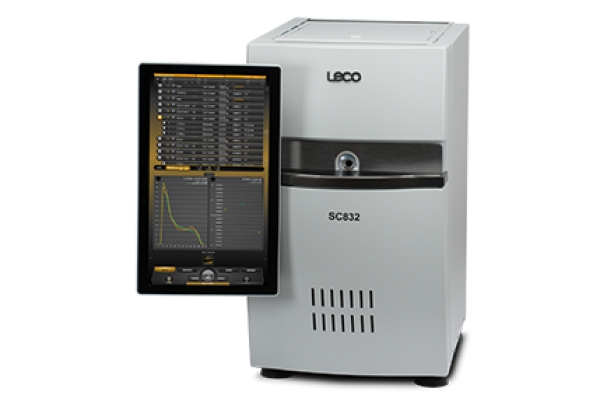832 Series Combustion: Sulfur and Carbon Analysis by Combustion
LECO’s 832 series will bring productivity, precision, and progress to your lab when determining the sulfur and carbon content in a wide variety of organic materials. Our Cornerstone® brand software platform powered by a touch-screen interface, increases usability and operational control without using valuable bench space. A high-efficiency combustion furnace, improved IR cell design, and a robust, rugged design make the 832 a valuable resource for any laboratory needing fast and accurate analysis.
Features
- An optional autoloader will streamline your lab
- 100-sample capacity autoloader with rugged design for improved reliability
- Simplifies operator workflow and delivers repeatable rapid analysis cycle times
- Improved IR cell for increased stability and precision
- Individual wide-range IR detection for both carbon and sulfur
- Improved IR cell temperature control, isolation, and circuitry
- Optional dual-range (DR) detection for sulfur for the widest sulfur range capability
- Easy to access maintenance areas
- High-efficiency furnace system design with intelligent control can reach 1550ºC
Applications
The 832 series is ideal for the following applications: Coal and Coke, Combustion Residues, Biomass Materials, Catalyst Materials, Cement, Soil and Ore Materials, Ceramics, Glass, Gypsum and Building Materials, Hydrated Lime and Cement, Fertilizer, Feeds and Plant Tissue Materials, Rubber, Resins and Polymers, Graphite, and Petroleum Products and Additives
Theory of Operation
The 832 Series of Elemental Determinators are specifically designed to determine the sulfur and carbon content in a wide variety of organic materials such as coal, coke and fuel oils, as well as some inorganic materials such as soils, cements and limestone by high temperature combustion with non-dispersive infrared detection (NDIR).
Analysis begins as a sample is weighed into a combustion boat and placed into the furnace typically regulated at 1350°C with a pure oxygen environment. The sample combusts, releasing carbon as CO2 gas with the sulfur forms being oxidized and released as SO2 gas. After a preset time, additional oxygen is introduced via a ceramic lance directly above the sample to accelerate the combustion of refractory materials. The combustion gases are swept to the back of the furnace and then forward through the inner and outer furnace tubes, allowing the combustion gases to remain in the high temperature zone of the furnace ensuring efficient oxidation. Upon exiting the furnace, the combustion gases flow through anhydrone tubes removing moisture and on to the flow controller, setting the flow of the combustion gases through the NDIR sulfur and/or carbon detection cells.
Non-dispersive infrared cells are based on the principle that CO2 and SO2 absorb infrared (IR) energy at unique wavelengths within the IR spectrum. Incident IR energy at these wavelengths is absorbed as the gases pass through IR absorption cells with the absorption being dependent upon the path length of the cell. The Dual Range (DR) sulfur 832 model has a wider sulfur range due to a short and long path length IR cells provided for measurement of high and low range sulfur signals. The software automatically selects which cell to use for optimum measurement in the 832DR model. The concentration of unknown samples is determined relative to calibration standards.
An external PC with LECO Cornerstone brand software manages all of the quantitative calculations and saves all of the data.
832 Series Details

- S832
Sulfur Analyzer - S832DR
Dual Range Sulfur Analyzer - S832HT
High-Temperature, Dual Range Sulfur Analyzer - C832
Carbon Analyzer - SC832
Sulfur and Carbon Analyzer - SC832DR
Dual Range Sulfur and Carbon Analyzer - SC832HT
High-Temperature, Dual Range Sulfur and Carbon Analyzer
- Boom-Mounted Touch-Screen Interface
- Cornerstone Mobile [PDF]
- SmartLine Remote Diagnostics [PDF]
- Sample Autoloader
- Performance Packages
Sulfur in Fertilizers [PDF] 肥料中の硫黄 [PDF]
832 Series [PDF] 832シリーズ [PDF]
Explore Organic Consumables, Reference Materials and Standards

